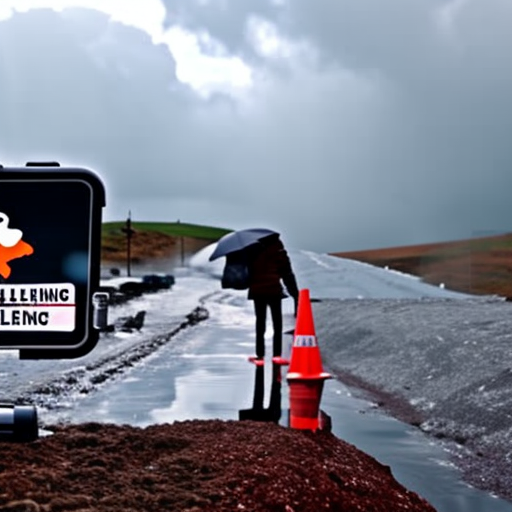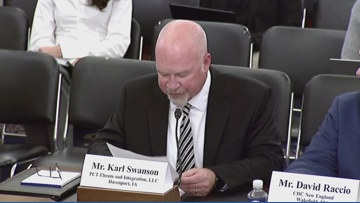
Impact of Climate Change on Education and Internet Access
Introduction
WASHINGTON – A federal program designed to provide internet access to low-income households is set to run out of funding during May, meaning millions of people could have to adapt to life without having online access.
The Affordable Connectivity Program
The Affordable Connectivity Program began during the pandemic and provides more than 23 million households with subsidies destined to support broadband access for jobs, education, healthcare and other vital needs of society.
The Federal Communications Commission reports the program started with $14.2 billion, but that funding is expected to be completely exhausted by mid-May, according to representatives of the United States Telecom Association.
“It does not bode well for so many of our most needy citizens and their kids,” said Jonathan Spalter, president and CEO of USTelecom.
Impact on Education and Virtual Alternatives
During the age of widespread internet availability, school districts, medical professionals and others have turned to virtual alternatives during threats of extreme weather – an option that may not be viable once funding runs out for millions of Americans.
Virtual learning days and the use of telemedicine have resulted in operations continuing at institutions during threats of weather without forcing children or the vulnerable into elements that often can be dangerous.
Before the pandemic, organizations and institutions would simply close during what were often dubbed ‘snow days’ in the North and ‘hurricane days’ in the South, but the full cancelation of hours led to the loss of productivity.
New York City Public Schools resorted to online learning in February ahead of the threat of the heaviest snowfall in two years, and the risk of an early-season tornado outbreak across the South in January caused some school districts from the Carolinas to Florida to implement online learning instead of possibly exposing children to the weather.
According to a survey conducted by the EdWeek Research Center in 2020, 39% of school district leaders across the country use virtual learning in place of weather cancelations and another 32% of school districts have contemplated on making a
SDGs, Targets, and Indicators
1. Which SDGs are addressed or connected to the issues highlighted in the article?
- SDG 4: Quality Education
- SDG 9: Industry, Innovation, and Infrastructure
- SDG 10: Reduced Inequalities
- SDG 11: Sustainable Cities and Communities
- SDG 17: Partnerships for the Goals
2. What specific targets under those SDGs can be identified based on the article’s content?
- SDG 4.4: By 2030, substantially increase the number of youth and adults who have relevant skills, including technical and vocational skills, for employment, decent jobs, and entrepreneurship.
- SDG 9.c: Significantly increase access to information and communications technology and strive to provide universal and affordable access to the Internet in least developed countries by 2020.
- SDG 10.2: By 2030, empower and promote the social, economic, and political inclusion of all, irrespective of age, sex, disability, race, ethnicity, origin, religion or economic or other status.
- SDG 11.b: By 2020, substantially increase the number of cities and human settlements adopting and implementing integrated policies and plans towards inclusion, resource efficiency, mitigation and adaptation to climate change, resilience to disasters, and develop and implement, in line with the Sendai Framework for Disaster Risk Reduction 2015-2030, holistic disaster risk management at all levels.
- SDG 17.17: Encourage and promote effective public, public-private, and civil society partnerships, building on the experience and resourcing strategies of partnerships.
3. Are there any indicators mentioned or implied in the article that can be used to measure progress towards the identified targets?
- Number of households with access to affordable internet connectivity
- Percentage of households with subsidies for broadband access
- Percentage of school districts using virtual learning in place of weather cancelations
- Number of households affected by the potential disruption of internet service
Table: SDGs, Targets, and Indicators
| SDGs | Targets | Indicators |
|---|---|---|
| SDG 4: Quality Education | 4.4: By 2030, substantially increase the number of youth and adults who have relevant skills, including technical and vocational skills, for employment, decent jobs, and entrepreneurship. | Percentage of school districts using virtual learning in place of weather cancelations |
| SDG 9: Industry, Innovation, and Infrastructure | 9.c: Significantly increase access to information and communications technology and strive to provide universal and affordable access to the Internet in least developed countries by 2020. | Number of households with access to affordable internet connectivity |
| SDG 10: Reduced Inequalities | 10.2: By 2030, empower and promote the social, economic, and political inclusion of all, irrespective of age, sex, disability, race, ethnicity, origin, religion or economic or other status. | Percentage of households with subsidies for broadband access |
| SDG 11: Sustainable Cities and Communities | 11.b: By 2020, substantially increase the number of cities and human settlements adopting and implementing integrated policies and plans towards inclusion, resource efficiency, mitigation and adaptation to climate change, resilience to disasters, and develop and implement, in line with the Sendai Framework for Disaster Risk Reduction 2015-2030, holistic disaster risk management at all levels. | N/A |
| SDG 17: Partnerships for the Goals | 17.17: Encourage and promote effective public, public-private, and civil society partnerships, building on the experience and resourcing strategies of partnerships. | N/A |
Copyright: Dive into this article, curated with care by SDG Investors Inc. Our advanced AI technology searches through vast amounts of data to spotlight how we are all moving forward with the Sustainable Development Goals. While we own the rights to this content, we invite you to share it to help spread knowledge and spark action on the SDGs.
Fuente: foxweather.com

Join us, as fellow seekers of change, on a transformative journey at https://sdgtalks.ai/welcome, where you can become a member and actively contribute to shaping a brighter future.







